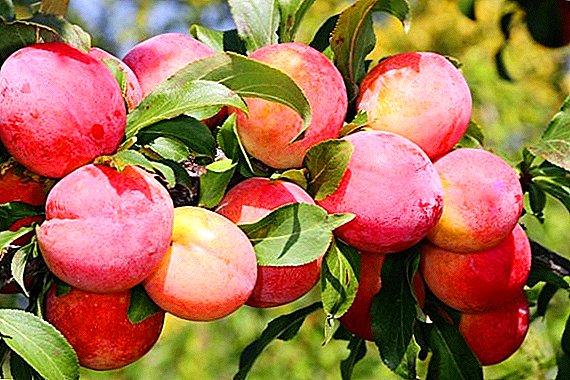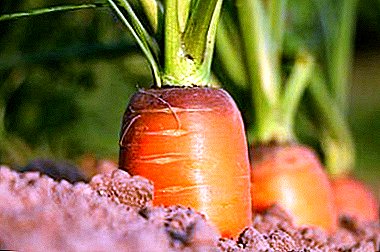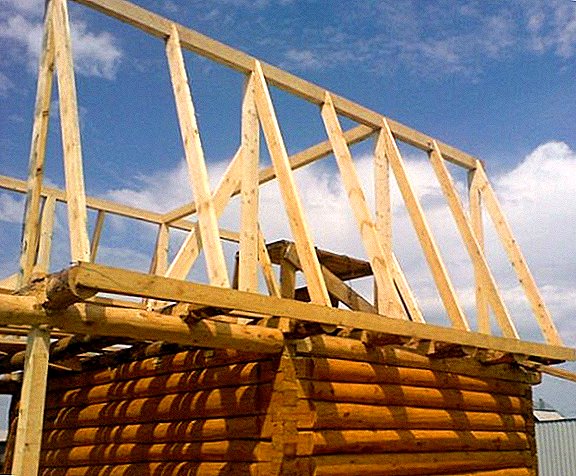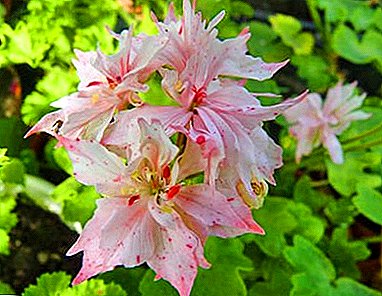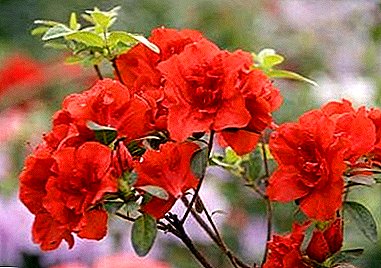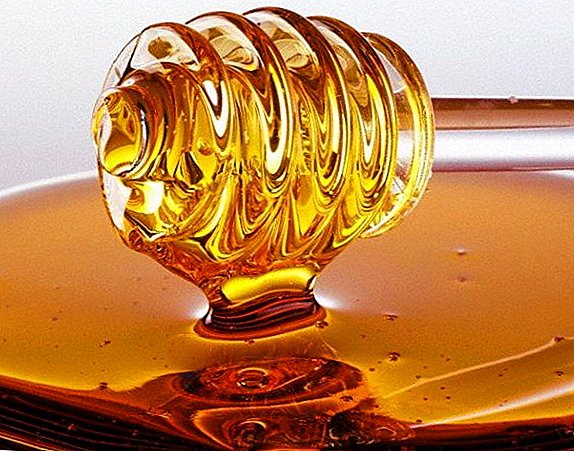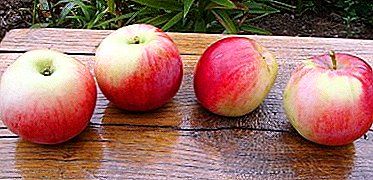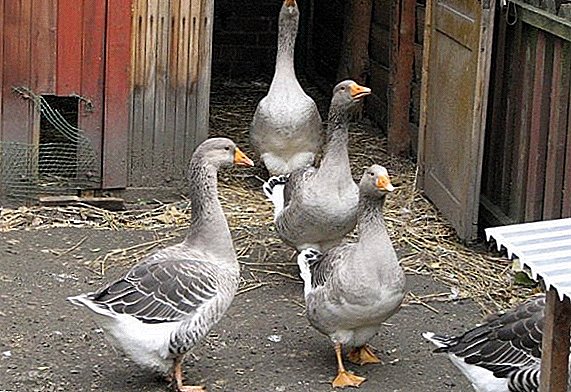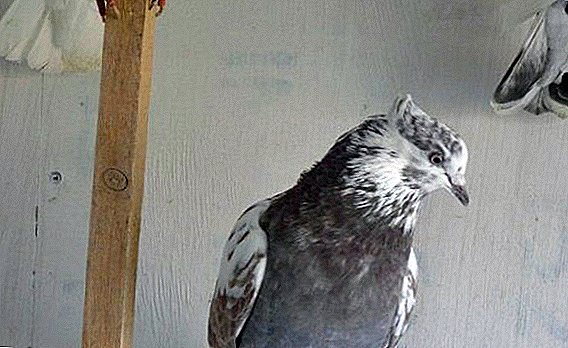 Proud, majestic, beautiful descendants of Persian birds - this is how one can characterize the Iranian battle pigeons, which from ancient times were the decoration of the royal palaces. Thousands of years ago the breeding of these birds was considered a sacred occupation, the popularity and elitism of which has been preserved to this day. If you want to keep Iranian pigeons at home, we will tell you how to provide comfortable conditions for the birds.
Proud, majestic, beautiful descendants of Persian birds - this is how one can characterize the Iranian battle pigeons, which from ancient times were the decoration of the royal palaces. Thousands of years ago the breeding of these birds was considered a sacred occupation, the popularity and elitism of which has been preserved to this day. If you want to keep Iranian pigeons at home, we will tell you how to provide comfortable conditions for the birds.
History reference
Studies by historians indicate that Ancient Persia was the birthplace of the first domesticated pigeons. It was there that the pigeons began to breed and maintain at the courtyards of the nobles, and the main criteria for a decent bird were endurance, the ability to fly at high altitude and beautiful appearance. To determine these qualities, the birds organized competitions.  After millennia, pigeon breeding has remained a sacred tradition of Iran, but it is still available to the most worthy people: for example, no more than 5% of all chicken farms breed and sell these birds. Interestingly, today the selection criteria for birds have changed: the main feature of birds is the quality of flight, which is why a large external variety of Iranian battle pigeons has arisen.
After millennia, pigeon breeding has remained a sacred tradition of Iran, but it is still available to the most worthy people: for example, no more than 5% of all chicken farms breed and sell these birds. Interestingly, today the selection criteria for birds have changed: the main feature of birds is the quality of flight, which is why a large external variety of Iranian battle pigeons has arisen.
Did you know? Females of the pigeon can lay eggs only in the presence of the male. In captivity, a mirror is used to deceive a bird.
Appearance
The main characteristics of the exterior of Iranian birds:
- Color: the pattern and color of feathering can be any, the most common are red, gray, yellow, almond and black colors;
- body length: 34-37 cm;
- head: round or oblong shape, small size, can be covered with smooth plumage, decorated with a forelock or tuft;
- eyes: small, color depends on the shade of plumage;
- beak: pink or dark shade, with a curved tip, long, on average, length 1.5-2 cm;
- neck: thick, short;
- body: elongated, the average length is 35 cm, but in large individuals it reaches 45 cm;
- wings: oblong shape, tight to the body, the average length is 21-25 cm, but in large individuals can reach up to 30 cm;
- tail: wide, consists of long feathers (10-12 cm, for large representatives - up to 18 cm);
- paws: medium or high in length, they can be bare-footed, kosmachy and with bell-shaped plumage.

Read about the popular breeds of battle pigeons.
Varieties
In the process of selection work, many varieties of "Iranians" were bred. Depending on the place of appearance of the breed, pigeons have different colors and characteristics of plumage.
Pigeon heads
The main feature of the species is the contrasting color of feathering on the head. The feathered body has a white feather cover, and the head and neck are painted in dark shades from light brown to black. This species is especially appreciated and revered, since it is relatively difficult to tame them, but the beautiful flight of birds is a reward for this. 
Tehran
A very popular and famous species of Iranian pigeons. The appearance of the birds is very similar to a hawk, impressive is also impressive size - the wingspan can reach 70 cm. The head is rounded, the beak is shortened. There is no clear predominance in color - the Teheran battle pigeons can be of various colors and patterns.
The head is rounded, the beak is shortened. There is no clear predominance in color - the Teheran battle pigeons can be of various colors and patterns.
Did you know? The cost of the world's most expensive carrier pigeon was 41 thousand pounds sterling.
Tabriz
This species is common in the western part of the country, because of the name of the province, pigeons are often called Azerbaijani pigeons. A distinctive feature of the Tabriz birds is the oblong shape of the head and body. Direct relatives are Baku pigeons. 
Hamadan (shaggy)
This subspecies arose as a result of breeding work in the city of Hamadan. The main distinguishing feature of Hamadan birds are long shaggy feathers on their legs, which can reach 20 cm.  As a result of constant selection, species adorned with a miniature forelock also appeared.
As a result of constant selection, species adorned with a miniature forelock also appeared.
Check out the top ten most unusual breeds of pigeons.
Cheeky
Under this name are combined two species: Tabriz and Tehran pigeons. Its name was due to the characteristic pattern on the head and cheeks. Karagezas are graceful, slender, pulled up birds, they are characterized by smooth plumage of the head and an oblong form of the body. 
Flight features
Despite all the differences in appearance, a common feature for all the battle pigeons is the manner of flight, which is accompanied by coups in the air (they are often called a game). The name "battle" pigeons received as a result of a special sound - battle, which arises from the flapping of their wings during the flight. This sound is so loud that it can be heard at a great distance from the bird, even if it is not visible. Breeders like to say that pigeons "click" the air. The “Iranians” fly slowly and calmly, with ease they can withstand the headwind, and their game causes delight and completely breathtaking.
Important! For a normal physical form in captivity pigeons need to train at least 2-3 times a week in the morning before feeding. Training is possible only in good weather conditions!
The main characteristics of the flight of the pigeons of the Iranian breed:
- ability for long flights. On average, pigeons can fly for 3-5 hours, especially hardy birds can stay in the air for up to 8-10 hours;
- ability to climb
- may hang in the air for 2-3 minutes. Such a phenomenon is called "rack outlet".
 The main types of fighting Iranian pigeons:
The main types of fighting Iranian pigeons:
- Stolbovoy. At the same time the bird rises a few meters and begins to do back flips, then rises again and repeats the game. Sometimes the birds can climb to a height of 15 m. The column type of battle is very revered by breeders.
- "With a hang". The bird flies slowly, then spreads its tail like a fan and freezes for a few seconds, after which it begins to do smooth back flips.
- Screw. The bird rises upward in a spiral, as if screwing into the air and continuously flapping its wings. This type of combat is very tedious for pigeons, it can be performed by the most hardy individuals, and therefore it can be observed less often.
- Ribbon. The bird does not hover in the air and does not go to the pole, but simply flips during normal flight.
Novice poultry farmers will be interested to learn about the nuances of breeding pigeons, their diet and disease.
Conditions of detention
For the maintenance of birds necessarily need to build dovecote. The basic requirements for the aviary and its arrangement are as follows:
- Location Since pedigree pigeons have weaker immunity, dovecote should be located away from sources of infection: septic tanks, cesspools, farms, neighboring pig houses and poultry houses, etc. It is desirable that there are no electric lines and high trees near.
- The size of the enclosure and the density of landing. For each pair of birds should be at least 50 cubic meters. see. To this space is to add space for nests, feeders, waterers. The height of the pigeon houses usually does not exceed 2 m.
- Courtyard for walking. Its dimensions should be the same as the pigeon area. Above and on each side the territory is protected with a metal grid, the floor should be covered with a board or plywood.
- Heating. Experienced breeders say that there is no need for a special heating system, but it is worthwhile to take care of the insulation and tightness of the house. Be sure to eliminate all drafts and crevices, warm the floor and regularly change litter to avoid dampness. Remember that the optimum temperature in summer is +20 ° C, and in winter - + 5 ... + 7 ° C.
- Ventilation. A ventilation system is needed to eliminate odors, carbon dioxide and to supply fresh air. It is very convenient to ventilate the room by erecting a mesh door right behind the main one from inside the enclosure. You can also make small lattice holes on the floor, on the ceiling should be a closing pipe for exhaust.
- Roaches Their number depends on the number of livestock. Usually perches are made of wooden bars with a section of 2-4 cm, perpendicularly mounted on the wall. For greater hygiene and ease of disinfection, bars should be smoothly brushed and varnished. The distance from the ceiling and the floor should be more than 50 cm.
- Nest The optimal parameters of the nest are: length - 80 cm, width - 40 cm, height - 30 cm. It is interesting that females prefer to equip the nests on their own, therefore it is desirable to simply leave building materials for them in the pigeon house: twigs, straw and hay. Otherwise, the doves may refuse to incubate.
- Feeders and drinkers. Feeders can be either from boxes or automatic. In the first case, they can be done independently, the latter option is convenient because it requires minimal human participation. It is worth considering that for adults and young animals need to equip the individual feeders.
- Bedding Its presence in the loft is mandatory in the winter. Sawdust, straw and hay, sand, dry peat or small branches with a layer of about 5-10 cm are used as bedding material. Under them you can lay a layer of wood ash or wormwood to prevent the risk of infectious diseases.



What to feed
The basis of the diet of these birds is made up of juicy greens and grain. The approximate ratio of different crops in the diet:
- 50% barley;
- 30% wheat;
- 10% millet;
- 10% all other grains and seeds: lentils, peas, oats, sunflower seeds.
The source of greens are various herbs: alfalfa, clover, spinach, lettuce, nettle, cabbage, sorrel.
Find out how you can feed a pigeon chick and how many years pigeons live at home and in the wild.
Diet:
- In the summer - two meals a day: at 6-7 am and at 18 pm.
- In winter - three meals a day: first feeding at 9 am, then at 2 pm and at 8 pm.
- When feeding the chicks - also three meals a day: the first time at 5 am, then at 13 o'clock in the afternoon and at 21 o'clock.
 The amount of food for individuals of different ages and at different periods of life is different. For example, young animals need 30-40 g of food per day, the daily rate of pigeons before molting is 50 g, and during the period of oviposition and reproduction - increase to 60 g. During the competition, when a bird spends a lot of energy, starch is needed (in the form of rice) and sugar.
The amount of food for individuals of different ages and at different periods of life is different. For example, young animals need 30-40 g of food per day, the daily rate of pigeons before molting is 50 g, and during the period of oviposition and reproduction - increase to 60 g. During the competition, when a bird spends a lot of energy, starch is needed (in the form of rice) and sugar.
Important! It is very important to adhere to the feeding regime and to ensure a balanced diet. Otherwise, the pigeons will fatten and quickly lose their athletic shape.
Be sure to add mineral supplements: ground shellfish, egg shells, charcoal, and salt. The last supplement must be diluted in water at the rate of 20 g per 1 liter and soldered to feathered.
But any of the following products to give pigeons is strictly prohibited, otherwise the disease can not be avoided:

- bread and bakery products. Cause fermentation and disrupt the digestive tract;
- meat products and fish. The feathered body is not adapted to digest this group of products;
- milk and cheese. Doves do not have lactobacilli, in addition, they are difficult to cope with so much fat.
Today, buying pigeons from breeders is not difficult, usually birds are sold in pairs. The maintenance of the fighting pigeons is a troublesome task that requires a lot of attention and laboriousness of the poultry farmer.
We recommend to learn how to make a pigeon feeder with your own hands.
However, the exciting game of these flyers in the air will be a worthy reward for such work.


